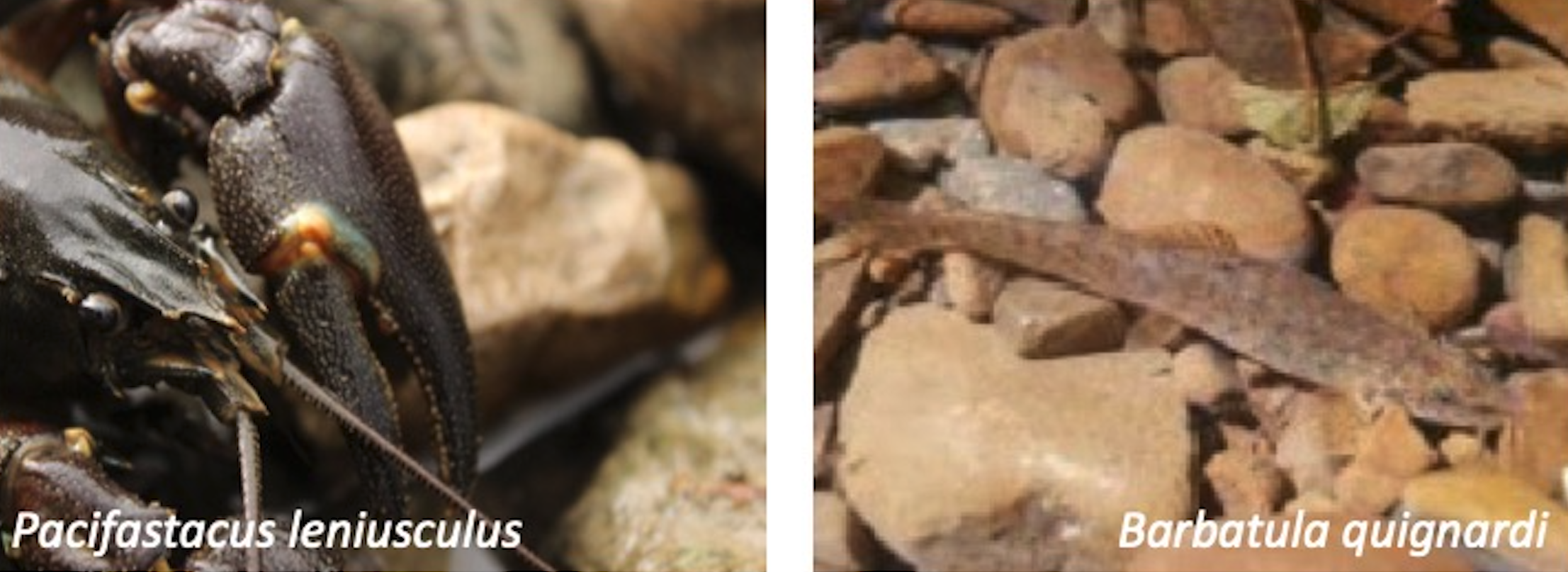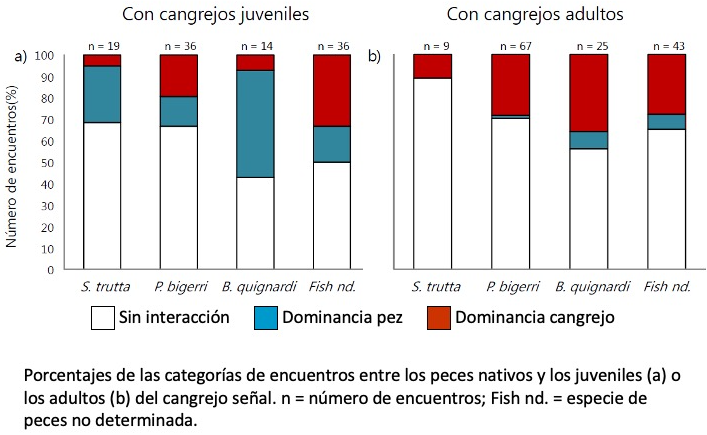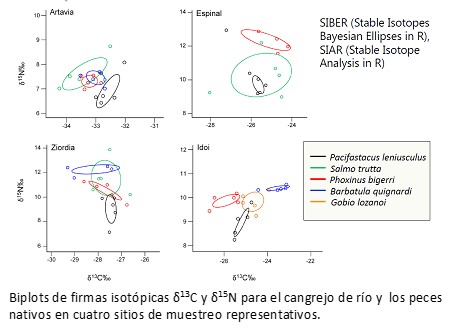 Interactions between signal crabs and native fishes
Interactions between signal crabs and native fishes
The signal crab, Pacifastacus leniusculus, is one of the most successful invasive crabs in Europe, generating serious impacts on native biodiversity.
The skill between fish and crabs takes place mainly over two resources: food and space. BIOMA researchers have been pioneers in analyzing the spatial interactions between an introduced crab and native fish under natural conditions.
Specifically, the interactions between Pacifastacus leniusculus and native fishes such as the giant otter(Barbatula quignardi), the goby(Gobio lozanoi), the chub (Phoxinus bigerri) and the brown trout(Salmo trutta) have been determined. In addition, the trophic overlap between them has been evaluated, analyzing both stomach contents and stable isotopes of carbon and nitrogen. For the ethological study, we used video cameras, which were modified for night vision, and infrared lights so as not to alter the natural behavior of the animals.

Most encounters between signal crabs and native fish were non-interacting (63%). However, in 66% of encounters with interaction, the crab was dominant. The result of the interaction depended on the stage of the crab (juvenile or adult) and the fish species.

Overlapping of the per diem expenses showed high overlap of stomach contents between signal crab and crayfish, goby and chub, and low overlap with trout. Abdominal musculature of fish and crayfish was sampled to measure stable carbon and nitrogen isotope ratios. Overall, similar diets and isotopic niches (trophic overlap) were observed between introduced crab and native fish, suggesting that there may be a trophic skill between these species when food resources are limited.

This work has shown that the skill between the signal crayfish and native fish is particularly high with benthic species. Considering that in the Iberian Peninsula these species, some of them endangered (crayfish), live in the area of distribution of the invasive crayfish, conservation managers should take urgent measures to control crayfish populations and thus avoid significant impacts on the biodiversity of native freshwater species.
